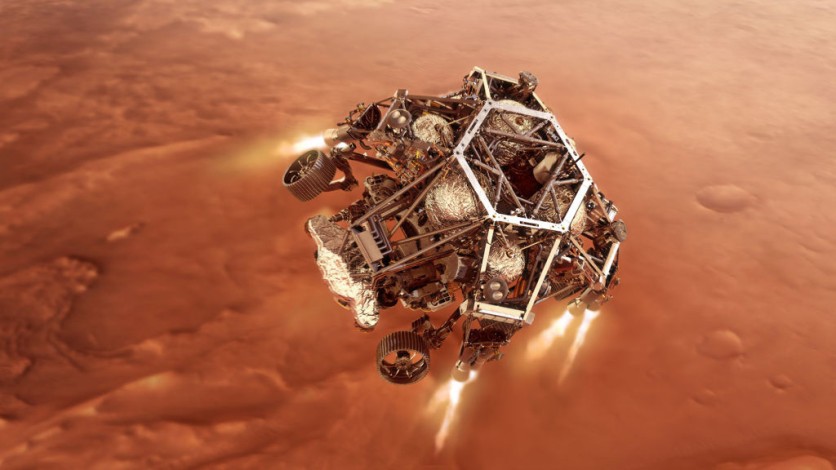MOXIE, NASA's instrument, has made progress towards making Marts habitable for humans. The instrument has been successful in generating breathable oxygen on the planet using its resources. According to ABC, the instrument has produced oxygen from carbon dioxide in the Mars atmosphere seven times since it landed on Mars in February of last year.

In-Situ Resource Utilization
The energy production of Moxie on the Red Planet shows the first demonstration of in-situ resource utilization, as reported by The Guardian. It is the practice of harvesting and using the planet's materials to make resources that would otherwise have to be transported from Earth.
According to the Massachusetts Institute of Technology (MIT), this is the first time MOXIE has used resources from the planet itself.
In each of its seven runs, the device was able to produce 6g of oxygen per hour, which is similar to the rate of a small tree on Earth.
Also Read: NASA's MOXIE Automated System Will Produce 'Breathable' Oxygen for Humans in Mars
MOXIE
MIT started developing MOXIE in 2014, and then it rode to the planet of Mars together with NASA's Perseverance in 2020. MOXIE landed on Jezero Crater in February 2021.
Researchers suggest a scaled-up version of MOXIE could be sent to the Red Planet to produce oxygen continuously at the rate of several hundred trees, ahead of the humans going to Mars.
The device works by sucking in the air on the planet, then filtering it. It uses electrolysis to split carbon dioxide into oxygen and carbon monoxide. When this is done, the device purifies and combines the singular oxygen atoms to produce breathable oxygen. Then, MOXIE will release the oxygen and carbon monoxide back into Mars' atmosphere.
So far, the device has shown it can make oxygen at almost any time of the Martian day and year. However, they haven't demonstrated running MOXIE when the temperature on the planet changes drastically, which is at dawn or dusk.
According to researchers, a scaled-up version of the device on a future mission to the Martian planet will be able to produce oxygen into a sort of storage tank that may be utilized for future use. Therefore, this could provide astronauts breathe oxygen. It can also be used for liquid oxygen necessary to manufacture rocket fuels.
Engineers are planning to push MOXIE's capacity by increasing its production, specifically in the Martian spring. This is because, in the spring on the planet, there are high atmospheric density and carbon dioxide levels.
They are also hopeful that at full capacity, the device can produce enough oxygen to sustain humans once they arrive on the plant and fuel a rocket to return humans to Earth.
Related Article: Elon Musk's 'Mars City' Expects to Use This NASA Box That Turns Mars' Air into Oxygen
This article is owned by Tech Times.
Written by: April Fowell
![Apple Watch Series 10 [GPS 42mm]](https://d.techtimes.com/en/full/453899/apple-watch-series-10-gps-42mm.jpg?w=184&h=103&f=9fb3c2ea2db928c663d1d2eadbcb3e52)



